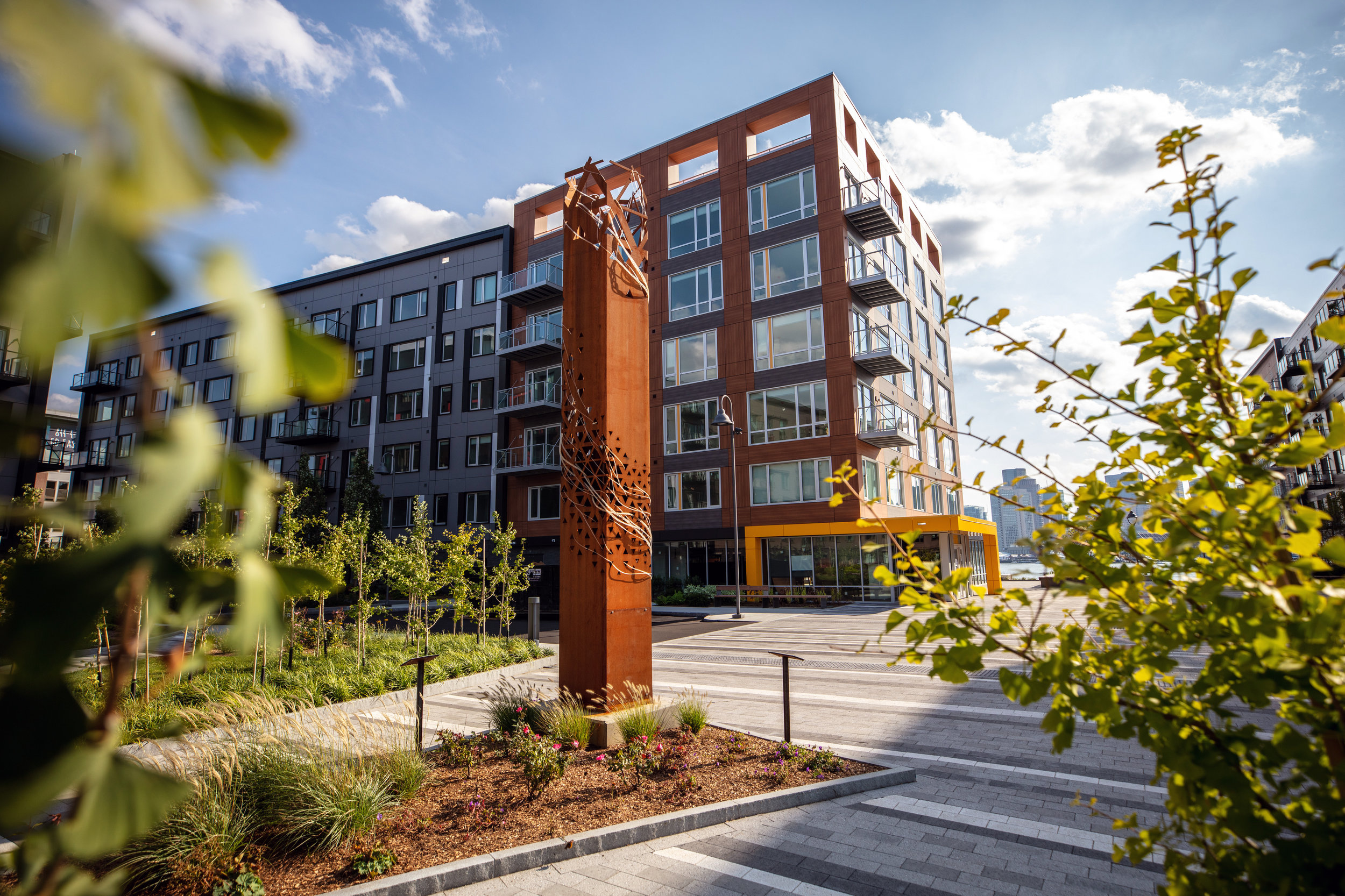Pillar
Pillar is a conceptual work inspired by East Boston’s shipbuilding history. Shipbuilding sprang to life along the banks of Boston and Charlestown in the 1630s, contributing to the loss of 70% of New England’s forest from 1650 to 1850. Boasting massive Eastern White Pine trees hundreds of years old, the region appeared as though it were designed for producing ship masts. The success of industrious colonists was so rapid that the Crown became concerned for the depletion of its newfound resource. In response, King William III of England enacted a charter in 1691 governing the Massachusetts Bay Colony, within it reserving for the King “all Trees of the Diameter of Twenty Four Inches and upwards”. Timber consigned under the charter was marked with three strikes of a hatchet - this symbol became known as the King’s Broad Arrow.
Pillar’s overall shape and size allude to a tree worthy of the King’s Broad Arrow. The three iconic strikes of the mark can be seen on multiple sides and are further referenced by the triangular pattern itself. The fiber optic cable running throughout the sculpture is woven in classic naval braids, referencing the era of shipbuilding that transformed both the countryside and economy of East Boston.
Pillar is a conceptual work inspired by the Carboniferous Period of Earth’s history. Three hundred million years ago, East Boston was part of the supercontinent Pangea and located near the equator. Giant scaled trees called Lepidodendrons (Greek lepido meaning “scale” and dendron meaning “tree”) towered over the land. Lignin, a naturally occurring plant polymer and an improvement over cellulose, allowed them to grow hundreds of feet tall. No organism at the time could eat lignin, so the Lepidodendrons didn’t decompose after they died. As a result, the forest floor was a deep ocean of huge fallen trees. For 100 million years the Lepidodendrons blanketed the earth, never decomposing, while sequestering all the atmospheric carbon in their bodies. The world was nearly plunged into an irrecoverable ice age. Luckily a fungi belonging to the class Agaricomycetes (making it a distant cousin of button mushrooms) evolved the ability to digest lignin, and saved the world.
Pillar’s overall shape and size allude to the primordial Lepidodendrons. The parametric pattern of holes is a reference to the iconic diamond-shaped scales of the ancient trees. The fiber optic cable evokes the ancient fungi, a dendritic and bold mycelium responsible for forging nature’s path forward.
Pillar is a permanent work commissioned by Lend Lease for the Clippership Wharf development. The work has been produced with the help of HarborArts and community liaison Matthew Pollock. Pillar is fabricated out of Corten weathering steel A588 and side glow fiber optic cable.
Pillar
New American Public Art
Clippership Warf, East Boston MA
2019
Dan Sternof Beyer
Bevan Weissman
Greg MacGlashing
Special Thanks :
Salem Metal for an amazing laser cutting job
HarborArts for community outreach








